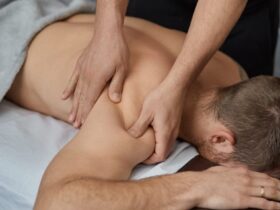Anyone who has or has ever had braces understands they are an investment into the future. Whether from tooth overcrowding, misalignment or a number of other reasons, people seek out orthodontists for help. In turn, orthodontists try to make the experience as painless and comfortable as possible, according to the Canadian Association of Orthodontists.
“It’s a big change to undergo, one that will be with you day in and day out for up to 24 months,” according to the website.
When experiencing life with braces, it is wise to have a number of tools in the toolbox, ready to use when needed or even on a daily basis.
The Canadian Association of Orthodontists (CAO) offers some life hacks for mitigating the challenges that are presented from braces.
Everyone has to eat, food is needed for functioning, afterall. Going into the orthodontic office to get braces tightened should also be accompanied by a trip to the grocery store. Preparation is key for when hunger strikes. Eating foods that are hard or likely to further irritate your mouth or teeth is not recommended. This is why the CAO suggests that refrigerators and pantries be stocked with soft foods in light of any pain or discomfort experienced from the braces or from a recent checkup.
Suggested foods are things like bananas, pudding, pasta, stews, and rice. Orthodontics patients should avoid crunchy, sticky or hard foods “as these foods can irritate your teeth or place unnecessary pressure on your braces.”
Calgary’s Dr. Vivek Cheba said he always encourages patients to stock up on the right foods, so they can still eat a healthy diet even when the braces make them uncomfortable.
It is logical that food will still get stuck in your braces when you eat. Food particles will get stuck between brackets and beneath wires. An easy solution is simply swishing water around in your mouth. Repeat as needed and if that doesn’t do the trick, then you should utilize a travel-sized toothbrush or flosser, which function much better than a toothpick.
Pain is to be expected periodically as teeth reposition thanks to the braces. The pain can increase after first getting braces put on, going through a checkup or a tightening, though it usually surfaces as soreness or sensitivity of the mouth or teeth. One way to combat this pain is by drinking cold beverages or water. Also, a salt water rinse using one teaspoon of salt in a tall glass of warm water can be helpful.
“I know it probably doesn’t seem like a simple salt water rinse can make your mouth and teeth feel better, but it really is helpful for most patients,” Dr. Vivek Cheba said.
If that method does not work, then there are other pain relieving options available, according to the Canadian Association of Orthodontists.
“There’s always the option of using pain relief medication before and after your appointment to ease your discomfort,” per the website.
Braces are an adjustment for anyone, so it is important for patients to eat healthy and be kind to themselves and their teeth, noted Dr. Cheba.










